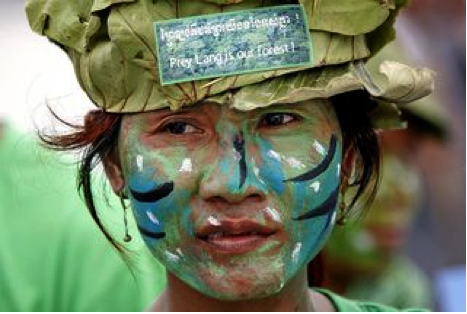
During the last 50 years, almost half of the world’s forests have been destroyed. How can we protect our remaining forests, which contain 80 percent of terrestrial species and provide livelihoods for nearly a third of the human population? Studies by the Center for International Forestry Research and the World Bank show that Indigenous forest-dwelling communities do a better job of protecting forests than conservation programs do. Our best bet for saving forests is to support their rights and their management of the forests they know best.
In Cambodia, some 200,000 mostly Indigenous Kuy villagers are desperately trying to prevent the destruction of Prey Lang (“Our Forest), the last large primary forest of its kind on the Indochina peninsula. Generations of Kuy people have protected the forest, with its sacred areas where spirits dwell and places for gathering fruits, medicinal plants, housing materials, and resin. Some 300 villages and family rice fields are scattered through a large buffer zone of secondary forest that surrounds Prey Lang. Their use of forest resources is sustainable, but now their livelihoods and the life of the forest itself are under attack. The government has issued a dizzying patchwork of concessions to road builders, mining companies, and agro-industries. Bulldozers are slicing huge swaths through the forest, clear-cutting enormous blocks of land for rubber and other plantations, even reaching into the primary forest, Prey Lang. Right now the companies are gearing up for the dry season, their season of forest destruction.
"Without forest, there is no life. In the Kuy language, Prey Lang means 'Our Forest.' This forest is for everyone. Prey Land is our forest but it is your forest, too. You can help save it." -Thai Bunleang, Kuy elder, small farmer, and Prey Lang Network activist
Join with the Kuy people to save Prey Lang! Please write a letter to Cambodia’s prime minister today.
